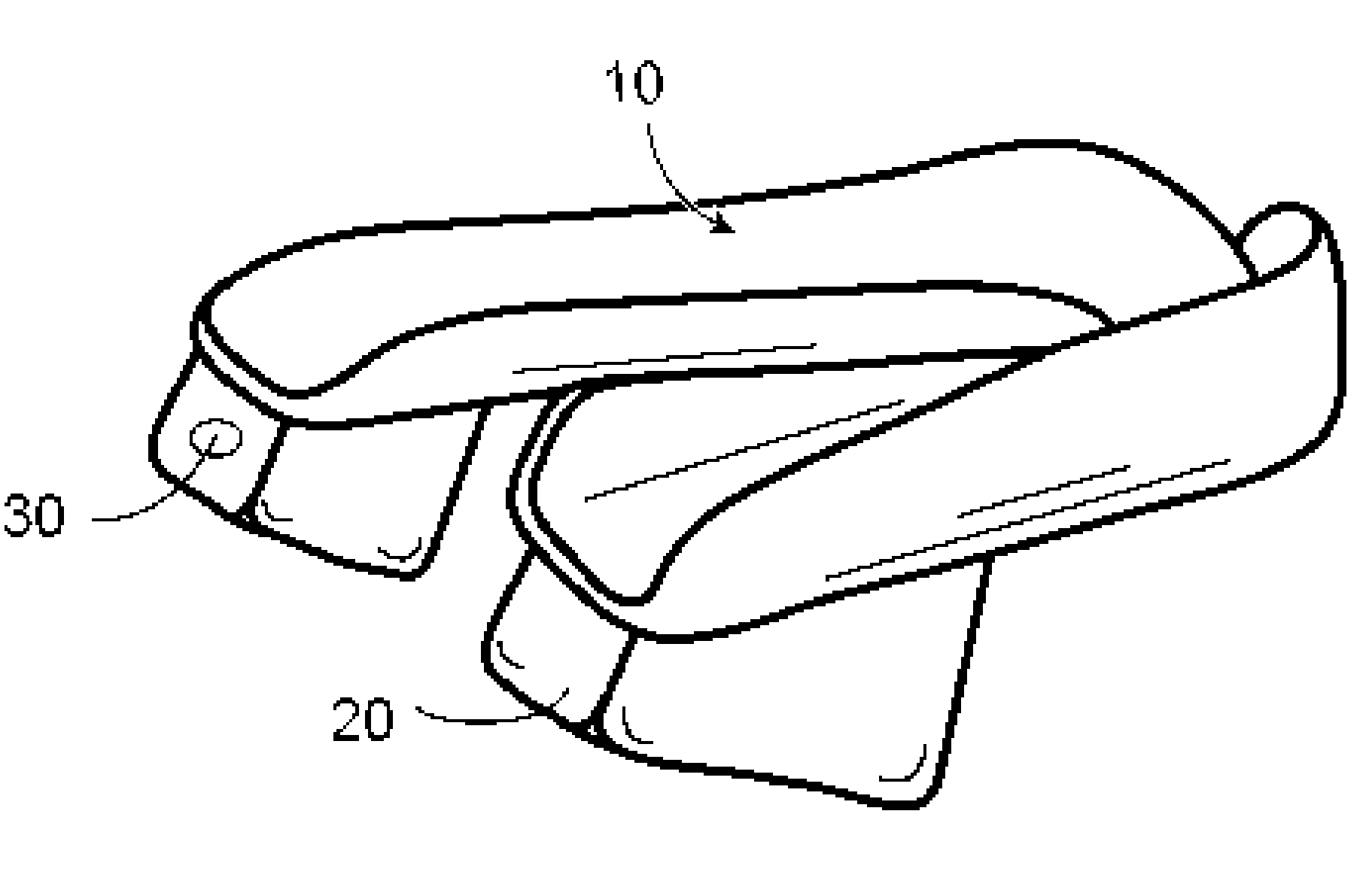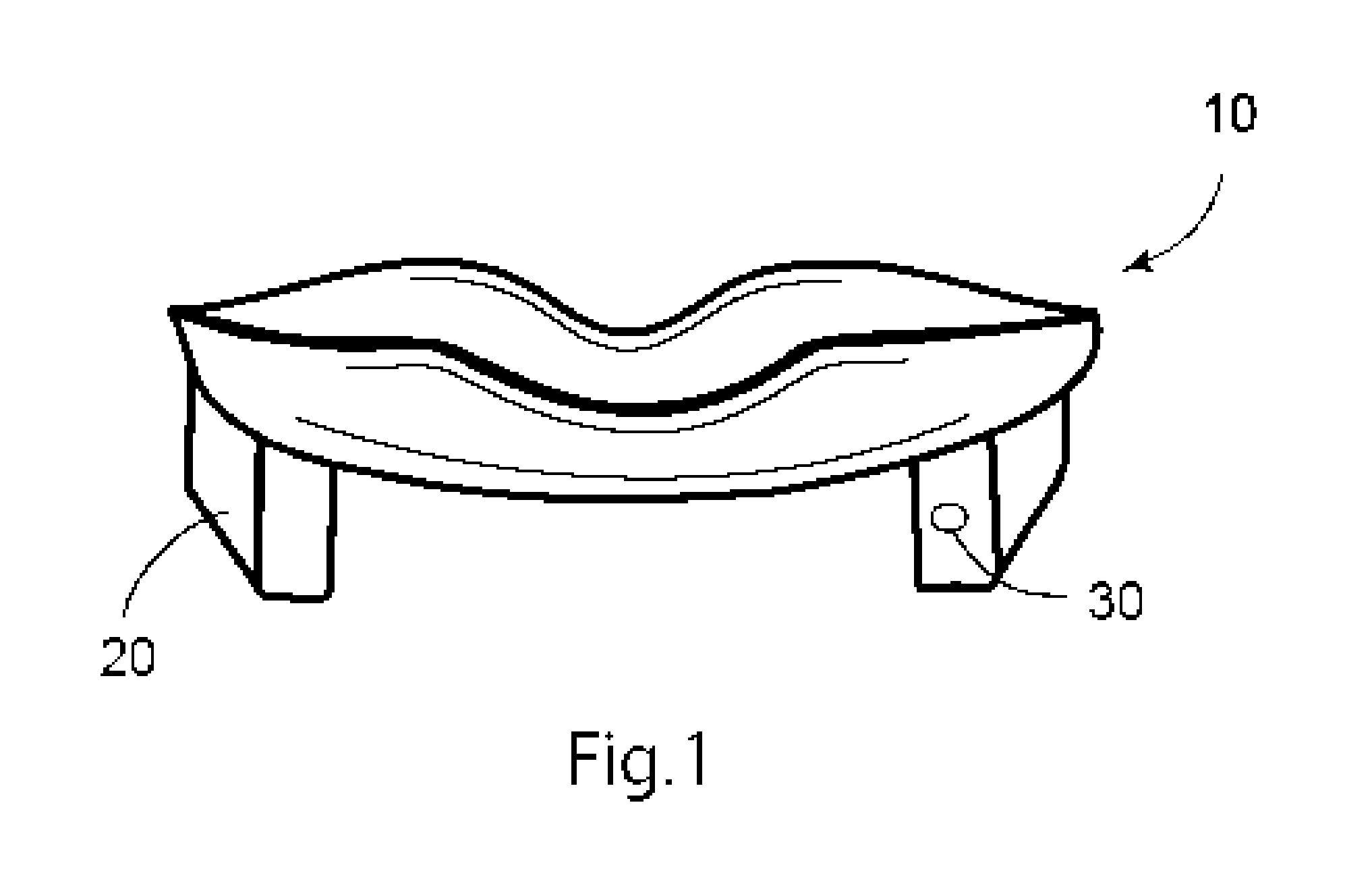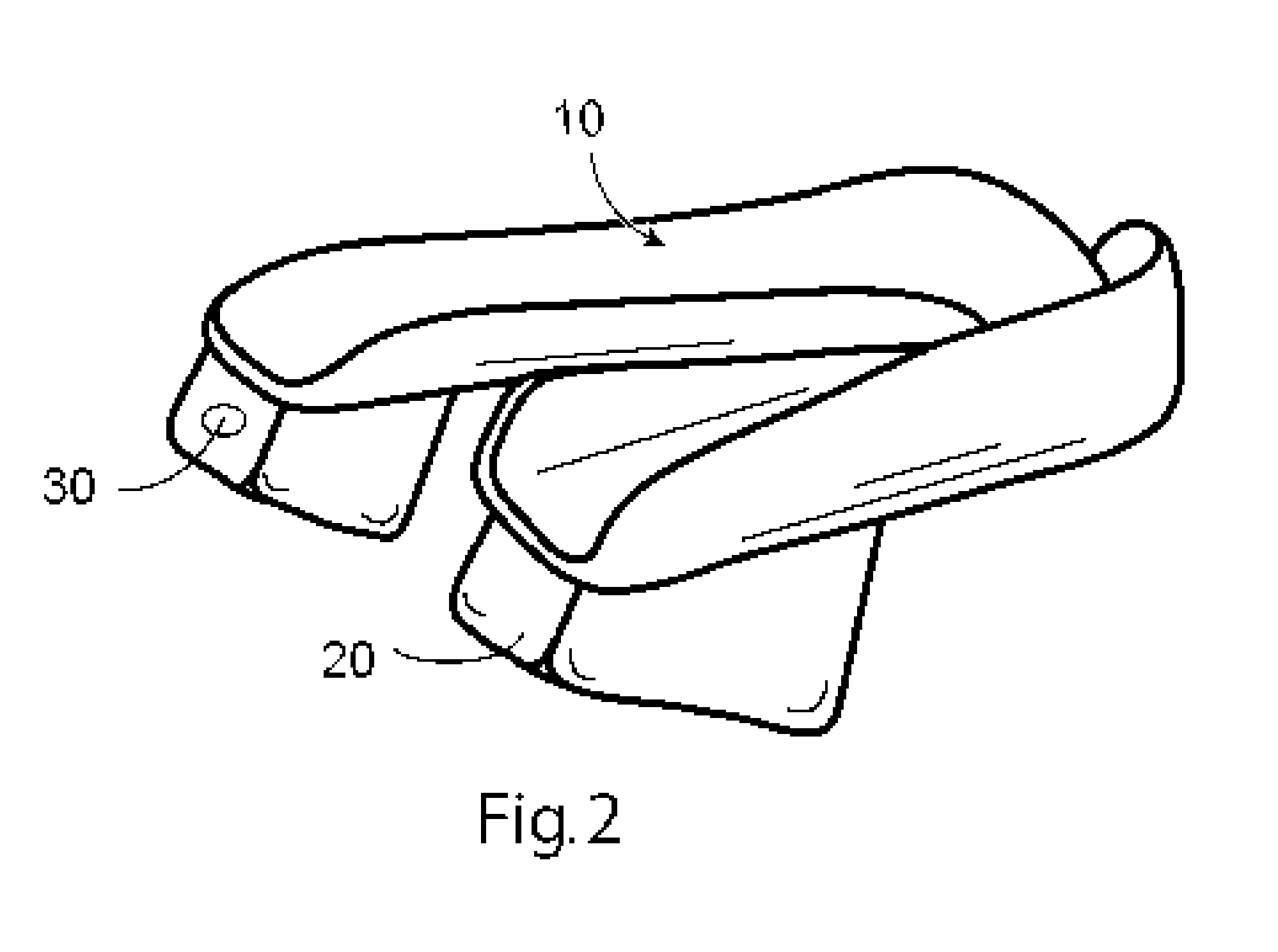Dental guard for airway intubation
- Summary
- Abstract
- Description
- Claims
- Application Information
AI Technical Summary
Benefits of technology
Problems solved by technology
Method used
Image
Examples
Embodiment Construction
[0038] An overview of a preferred embodiment of the present invention is illustrated in FIG. 1. The inventive dental guard comprises a mouthguard 10 that covers and grips the incisors and other maxillary teeth as far back as the molars, and also comprises trapezoidal blocks or wedges 20 attached or fused to the mouthguard. The location of an optional light emitting diode LED or other light source 30 is included in the left wedge.
[0039]FIG. 2 provides an alternative view of the dental guard from the right posterior perspective, illustrating the trough nature of the mouthguard 10, and further illustrating the location of the trapezoidal blocks 20 with respect to the guard. The trapezoidal block on the left side in a preferred embodiment may include a channel or interior cavity to contain a miniature light 30 such as a conventional light or an LED, and its power source 40, typically a battery. This light is directed to the back of the mouth, to provide additional lighting for the bene...
PUM
 Login to View More
Login to View More Abstract
Description
Claims
Application Information
 Login to View More
Login to View More - R&D
- Intellectual Property
- Life Sciences
- Materials
- Tech Scout
- Unparalleled Data Quality
- Higher Quality Content
- 60% Fewer Hallucinations
Browse by: Latest US Patents, China's latest patents, Technical Efficacy Thesaurus, Application Domain, Technology Topic, Popular Technical Reports.
© 2025 PatSnap. All rights reserved.Legal|Privacy policy|Modern Slavery Act Transparency Statement|Sitemap|About US| Contact US: help@patsnap.com



